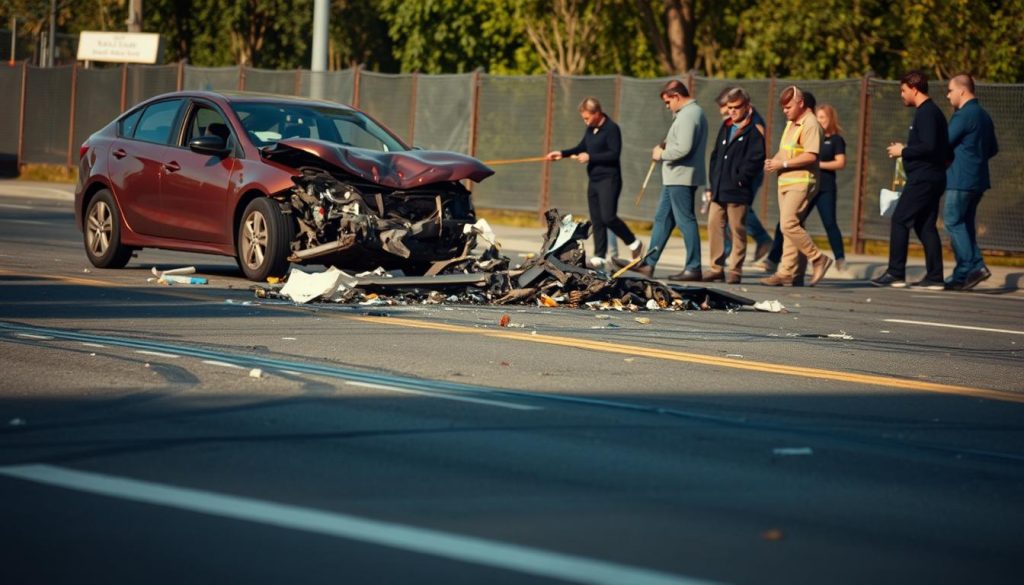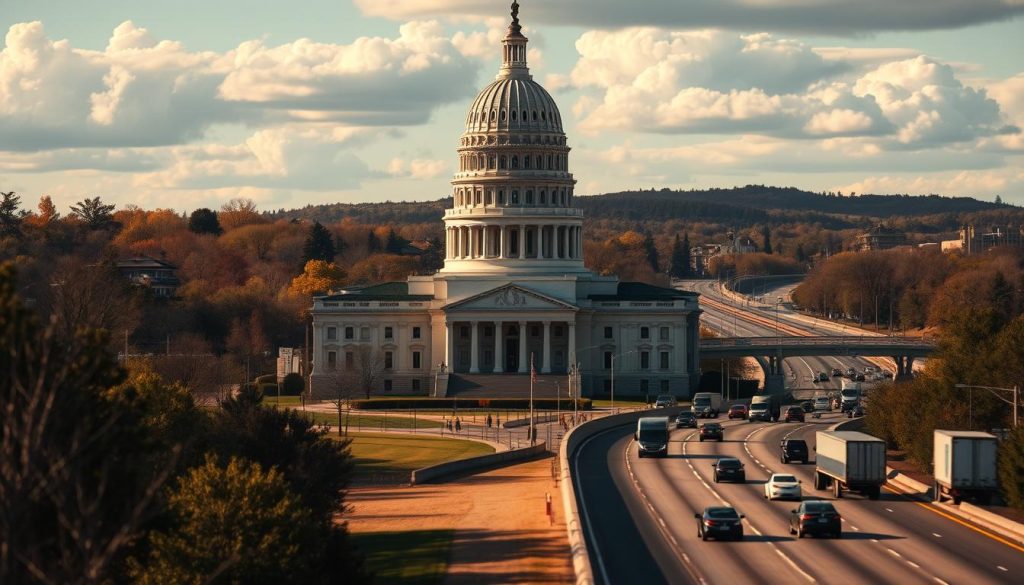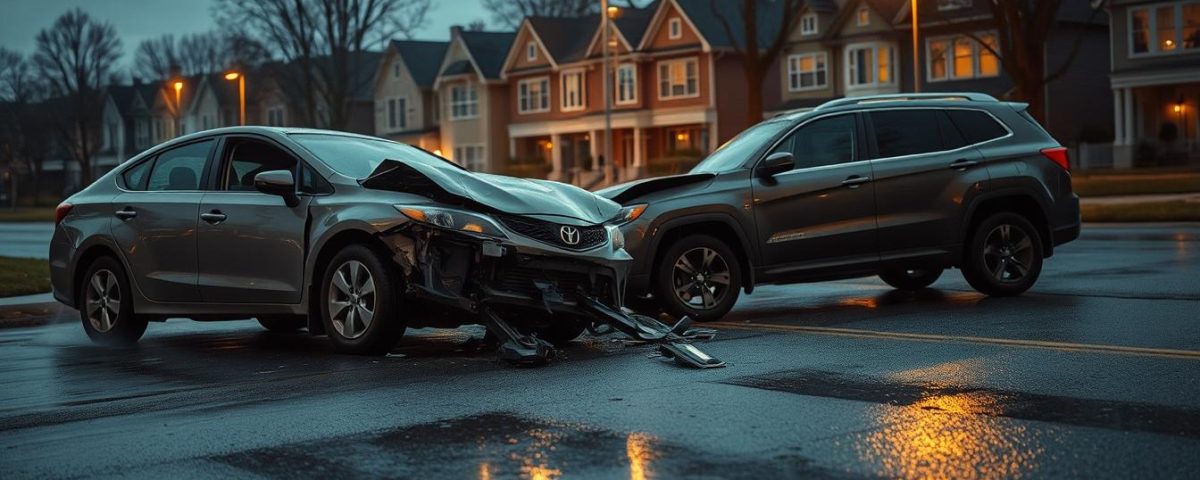- Auto Body Repair - Collision Center
- Leon Valley (210) 680-1987
- Walzem at IH 35 (210) 858-3630
- info@miraclebp.com

Is Your Car a Total Loss? How Insurers Decide Repair vs. Replacement

Common Car Accident Injuries and What They Mean for Your Repair
After a car accident, we often wonder who pays for the repairs. Many things affect this, like who was at fault, insurance, and state laws. Knowing these helps us figure out who owes what and how to get paid back.
Understanding our rights and duties after a crash makes dealing with repair costs easier. It helps us get through the process better.
Key Takeaways
- Determining liability is crucial to understanding collision repair costs.
- Insurance coverage plays a significant role in managing repair expenses.
- State laws can impact financial responsibility in car accidents.
- Being informed about our rights can help simplify the claims process.
- Documentation is key in navigating collision repair costs effectively.
Understanding Car Accident Liability
Car accident liability means who pays for damages from a car crash. This includes damage to property, injuries, and emotional harm. Knowing who is liable is key to figuring out who pays for repairs.
Definition of Car Accident Liability
Car accident liability is about paying for damages caused by our mistakes. This can include many types of damages. Not paying for these damages can lead to big financial problems. Laws and insurance policies usually decide who is responsible.
Importance in Collision Repair Costs
Knowing who is liable is very important for fixing cars after an accident. If we caused the accident, our insurance might make us pay for repairs. But, if someone else was at fault, their insurance usually covers the costs. So, understanding liability helps us know who will pay for repairs.
Types of Liability in Car Accidents
Car accidents can be divided into two main types: fault-based and no-fault. Knowing these can help with fixing cars and insurance claims.
Fault-based Liability
In fault-based systems, the driver at fault pays for repairs. Finding out who was at fault is key. Many places use this method, so insurance companies check the accident closely.
No-fault Liability
No-fault systems let drivers get help from their own insurance, no matter who caused the crash. This makes getting help faster and easier.
Determining Fault in an Accident
When an accident happens, figuring out who is at fault is key. This helps us know who should pay for repairs. Many ways help us understand what happened.
Insurance Investigations
Insurance companies are very important in finding fault. They do deep investigations. They look at the accident scene, gather evidence, and check documents.
They focus on things like how much damage there is. They also look at if any traffic laws were broken.
Eyewitness Accounts
Eyewitnesses give us important details. Their stories help us understand what happened before the accident. They tell us things that physical evidence can’t.
They might talk about how fast cars were going. Or if anyone made sudden moves that caused the accident.
Police Reports
Police reports are official records of accidents. They tell us what happened. They include what people involved said and what the police saw.
This info is very important. It helps us understand the accident. It’s often used to figure out who was at fault.

The Role of Insurance Companies
Insurance companies help a lot after car accidents. They figure out who was at fault. They look at what happened and who said what.
How Insurance Determines Liability
Insurance companies are key in finding fault. They check many things to decide who was wrong. This includes:
- Reviewing police reports
- Analyzing eyewitness statements
- Inspecting photographs and other evidence
They look at all these to figure out who is to blame. This affects how much we have to pay and what insurance covers.
Liability Coverage Explained
Liability coverage is very important in our auto insurance. It helps us avoid big costs if we cause an accident. It usually covers:
- Damage to other cars
- Medical bills for people hurt
Knowing about liability coverage helps us deal with insurance claims better. It helps us understand what our policy covers. This way, we can handle repair costs and stay safe.
What Happens if You’re Not at Fault?
Car accidents can be very stressful. If it’s not our fault, we have rights and options. We can claim against the other driver’s insurance to cover our car repairs.
Claiming Against the At-Fault Driver
If someone else caused the accident, we can file insurance claims against their policy. This way, we can get our car fixed. We need to collect police reports and witness statements to support our claim.
Working with Your Insurance
We should talk to our insurance while making a claim against the other driver. They will help us with the claim process. Having good coverage protects us from extra costs. Our insurance can deal with the other driver’s insurer for us.
The Impact of State Laws on Liability
It’s important to know how state laws affect car accident liability. Different laws about negligence change how we deal with repair costs and compensation. We must learn about comparative negligence and no-fault states to handle our duties well.
Comparative vs. Contributory Negligence
State laws decide who is at fault in accidents. In some places, fault is split based on who is more to blame. For example, if we’re 20% at fault, we only pay for 20% of the costs.
In other places, any fault can stop us from getting damages. Knowing these rules helps us protect our rights and manage repair costs.
No-Fault States in the U.S.
In no-fault states, we get help from our own insurance, no matter who caused the accident. This makes claims easier but limits suing the other driver. In these areas, knowing how insurance helps with repair costs is key.

Repair Cost Estimates and Responsibilities
After an accident, getting accurate repair cost estimates is key. This helps us and our insurance companies figure out the damages. It also helps us know who owes what money.
Getting a Professional Estimate
We should always ask for professional estimates for repair costs. Auto body shops can give us detailed plans for repairs. These plans tell us what parts, labor, and time are needed.
Having these plans helps us talk to our insurance providers. It makes sure we know what repairs are needed.
What’s Covered by Insurance?
It’s important to know what our insurance covers for repair costs. Coverage usually includes:
- Parts needed for repairs
- Labor costs for the repair
- Extra costs, like rental cars while repairs are done
Knowing what our insurance covers helps us understand our costs. It shows why getting accurate estimates is so important. This way, we’re ready for any extra money we might need to pay.
Potential Legal Actions After an Accident
After an accident, we might need to take legal steps. If talking to insurance companies doesn’t work, we might sue. Knowing when to sue is key to getting fair compensation.
When to Consider a Lawsuit
There are reasons to think about suing. We should consider it if:
- The damages are more than our insurance covers.
- The other driver doesn’t have enough insurance.
- The insurance company is slow or unfair.
Talking to a lawyer can help decide if suing is right for us.
Seeking Compensation for Damages
We might get money for different damages. This includes:
- Medical bills for treatment and recovery.
- Money for lost work time.
- Compensation for pain and emotional harm.
It’s important to keep good records of our damages. This helps our case if we sue. Knowing our rights helps us make smart choices about getting compensation.
Uninsured or Underinsured Motorist Issues
Dealing with uninsured and underinsured drivers can be tough after a car crash. Uninsured drivers have no insurance. Underinsured drivers have coverage that might not cover all damages. It’s key to know about these to protect ourselves and fix car damage.
Definition of Uninsured Motorists
Uninsured motorists drive without insurance. This means victims can’t easily get help for repair costs or medical bills. It’s important to know how our insurance works with these drivers.
How to Handle Underinsured Drivers
Underinsured drivers have little insurance, which might not cover all accident costs. We need to check our insurance for underinsured coverage. Here’s what we can do:
- Contact our insurance to see how it works with underinsured drivers.
- Document the accident and gather evidence for our claim.
- Get legal help if we need to deal with complex cases.
Being ready for uninsured issues helps us face unexpected costs after an accident.
When Multiple Parties Are Involved
Multi-car accidents can be very complicated. We need to know about shared liability. It helps figure out who pays for repairs.
When many drivers are involved, finding fault can be tricky. This affects insurance claims and fixing cars.
Shared Liability in Multi-Car Accidents
In multi-car accidents, more than one driver might be at fault. This can happen for many reasons. Like driver mistakes, bad weather, or road problems.
We have to be careful in these situations. They can make claims and getting money back harder.
How it Affects Repair Costs
Shared liability can really change how much repairs cost. Since fault is split, figuring out who pays can be hard. This is through insurance.
Knowing this helps us get ready for extra costs. With a good plan, we can deal with repair costs better. And make sure our claims go smoothly.
Tips for Managing Collision Repair Costs
After an accident, managing repair costs is key. Keeping detailed records of all expenses is crucial. This includes getting detailed estimates and tracking all talks with our insurance.
Good record keeping helps avoid missing anything important. It gives us a clear record for any disputes or claims.
It’s also vital to keep in touch with our insurance adjusters. Make sure they have all the needed documents. This helps avoid delays and makes fixing costs easier.
If managing costs feels too hard, help is available. Companies like Miracle Body and Paint in San Antonio are experts. They can guide us through the repair process, helping us get back on the road fast and safely.


